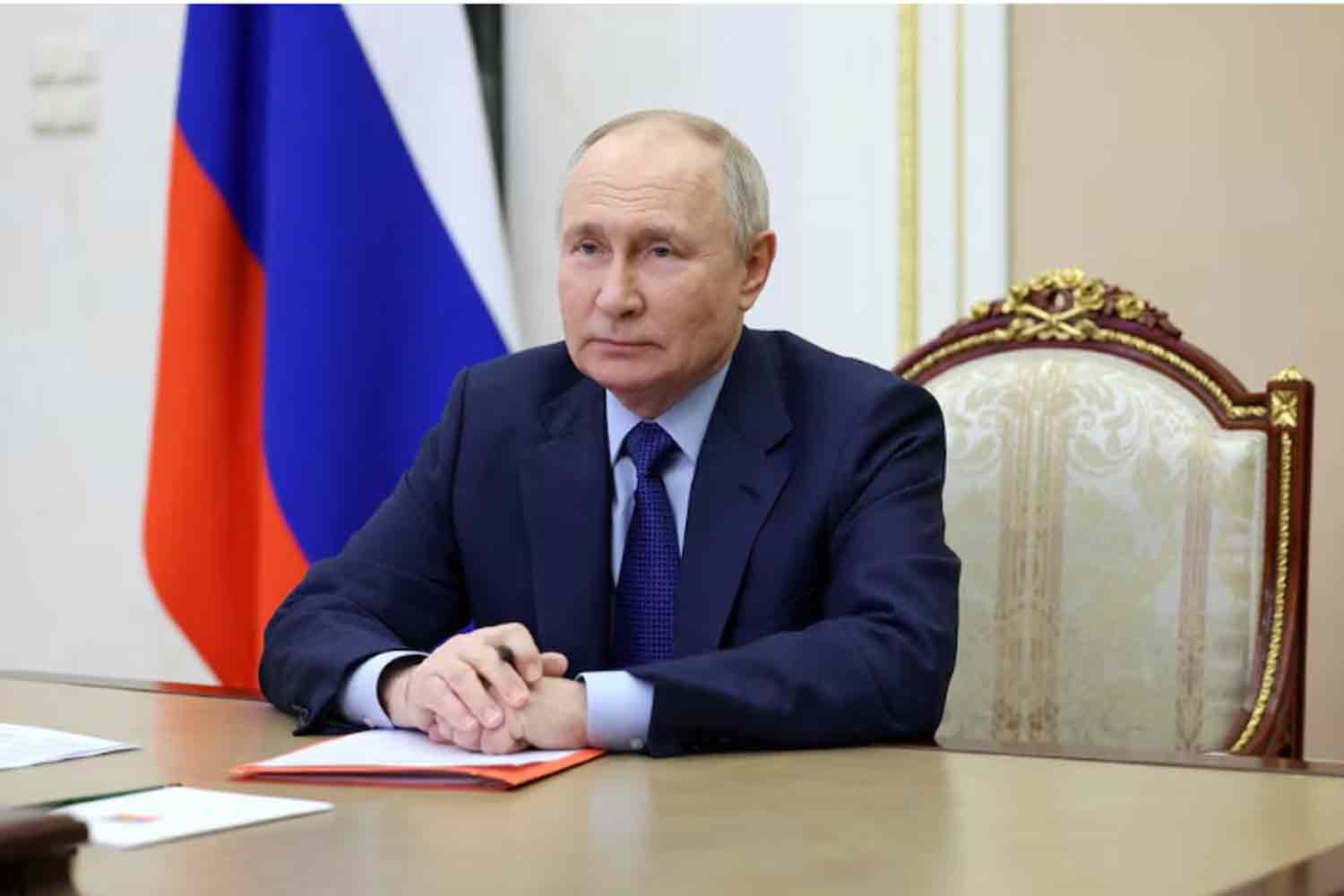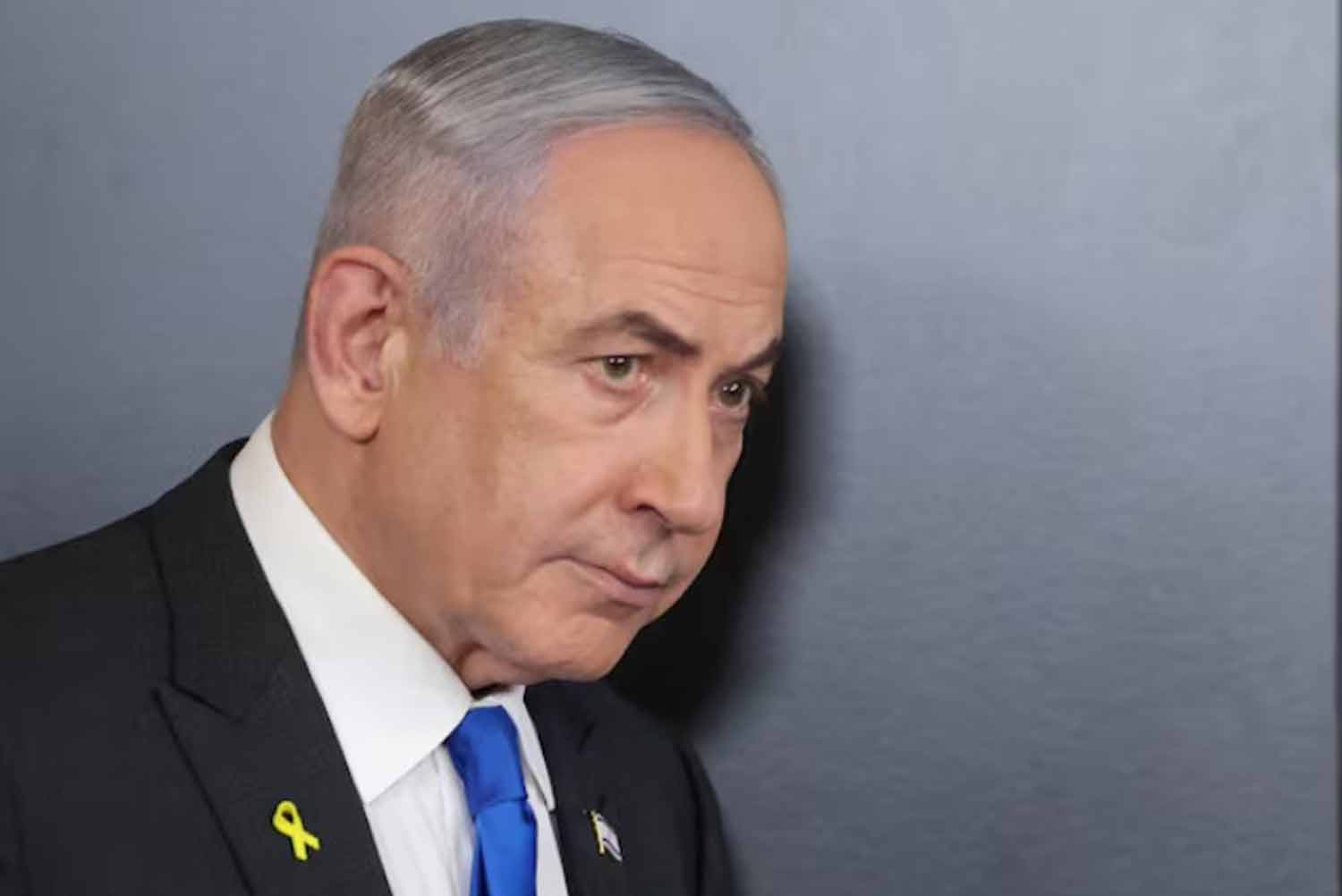Vladimir Putin’s hypersonic missile conveyed a clear warning to the West regarding Ukraine: withdraw your support, or face the possibility of Russia targeting U.S. and British military installations.
On Thursday, Russia launched a new intermediate-range hypersonic ballistic missile named “Oreshnik,” or Hazel Tree, aimed at Ukraine. This action was described by Putin as a direct retaliation for Ukrainian attacks on Russian territory using U.S. and British missiles.
In a special announcement from the Kremlin shortly after 8 p.m. Moscow time, the Russian president indicated that the conflict was escalating towards a global confrontation, although he did not invoke nuclear threats.
Thus far, Putin has refrained from directly attacking the West, a move that could provoke a direct clash with NATO—a scenario that U.S. President Joe Biden warned in March 2022 could escalate into World War III.
In his remarks, the Kremlin leader warned the West that Russia maintains the right to target military facilities in nations that allow Ukraine to use their missiles against Russia, specifically naming the United States and Britain.
“Putin is signaling to the West to stop—halt—withdraw,” stated Sergei Markov, a former adviser to the Kremlin, in an interview with Reuters.
“The message Putin is sending globally is that we view these attacks as a direct involvement of the United States and Britain in a conflict against Russia,” he added. “However, we are not retaliating with full force at this moment because these attacks will not alter the war’s outcome.”
A Russian source, who requested anonymity due to the delicate nature of the situation, indicated that Putin had suggested a desire to avoid escalation, although the likelihood of Russia resorting to nuclear weapons remains significant.
The source did not specify whether this referred to tactical battlefield weapons or long-range nuclear missiles.
NUCLEAR THRESHOLD
President Biden has reversed his stance on allowing Ukraine to use U.S. missiles against targets deep within Russia, a change in U.S. policy that has gained urgency following Donald Trump’s election victory on November 5, according to sources familiar with the situation, as reported by Reuters on Thursday.
This decision may serve to “Trump-proof” certain aspects of Biden’s Ukraine strategy by bolstering Kyiv’s position should U.S. support wane, one source noted.
Russian officials have characterized Biden’s move as a reckless action by a lame-duck administration, intended to create a significant crisis for Trump to address upon his inauguration in January.
This places Putin in a challenging position: escalating now could trigger the very crisis he seeks to avoid, while refraining from action might lead the West to perceive him as weak, prompting further encroachments on clear Russian boundaries.
When Putin warned in September that Russia would revise its nuclear doctrine to potentially allow a nuclear response to conventional Western missile strikes, U.S. Secretary of State Antony Blinken remarked that this was not the first instance of Putin “rattling the nuclear saber.”
On the day Ukraine launched U.S.-made ATACMS missiles into Russian territory, Putin approved the reduction of the nuclear threshold he had previously indicated two months prior.
Following this adjustment, the Pentagon stated that the United States had not altered its nuclear posture and had not observed any changes in Russia’s nuclear stance.
The Pentagon and the UK’s Ministry of Defence have not yet provided a response regarding any adjustments to their security measures following Putin’s threats against their military facilities.
When questioned about the primary message conveyed in Putin’s remarks, Kremlin spokesperson Dmitry Peskov stated on Friday that the essential point is Russia’s intention to respond to “reckless actions” by Western nations involved in strikes against Russia.
“The Russian side has clearly showcased its capabilities, and the outlines of potential retaliatory measures, should our concerns be disregarded, are distinctly defined,” he remarked.
In addition to cautioning that U.S. and British military sites could be at risk, Putin indicated that America’s plans to position short- and intermediate-range missiles in Europe and Asia might compel Moscow to adopt similar measures, thereby bringing its military capabilities closer to the West.
“Putin is unmistakably indicating a greater dependence on strategic weaponry—such as nuclear and longer-range missiles—to pressure the U.S. and NATO into ceasing their support for Ukraine,” noted Jon Wolfsthal, a former special assistant to President Barack Obama and current director of global risk at the Federation of American Scientists.
“I do not believe he intends to resort to nuclear options in a conflict he is currently winning, but he seems to want to instill significant concern, possibly to facilitate a withdrawal by Trump,” he added.
“Die Hard”
Markov indicated that Putin’s remarks were aimed at his domestic audience in Russia, where there is significant pressure for him to confront the West decisively.
Pro-Putin Telegram channels have referred to the 72-year-old leader as a “Krepkiy Oreshnik,” a clever reference to both a missile and the 1988 film “Die Hard,” which translates to “Krepkiy Oreshek” in Russian, meaning a tough nut.
Chechen leader Ramzan Kadyrov commended Putin for a statement that he claimed had been long awaited by thousands of soldiers. “They are comfortable in the West, enjoying peace. Let them experience firsthand what a genuine war entails,” Kadyrov stated. “Did they seek a real conflict with Russia? Then let them fully experience it!” He emphasized the need to showcase the full destructive capability of Russia’s long-range weaponry.
Putin asserted that Ukraine’s attack using ATACMS on November 19 did not cause significant damage. However, he noted that a subsequent strike with British Storm Shadow missiles on the Kursk region targeted a command center, resulting in casualties.
The launch of what the United States suspects to be a new ballistic missile serves as a clear, albeit measured, warning to the West, according to analysts.
Kremlin spokesperson Peskov stated that Russia was not technically required to notify Washington about the missile strike, as it involved an intermediate-range missile rather than an intercontinental one. However, he noted that Moscow had still provided a warning to the U.S. 30 minutes prior to the strike.
Although Putin deliberately refrained from mentioning nuclear weapons in his remarks, the new hypersonic missile launched by Russia at Dnipro in Ukraine is capable of carrying nuclear warheads and has the range to reach Europe or the west coast of the United States.
In conclusion, Putin cautioned the West against underestimating his determination. “We believe we have the right to target the military installations of those nations that permit their weapons to be used against our assets,” he stated. “Anyone who doubts this is mistaken—there will always be a response.”
Discover more from Defence Talks | Defense News Hub, Military Updates, Security Insights
Subscribe to get the latest posts sent to your email.





